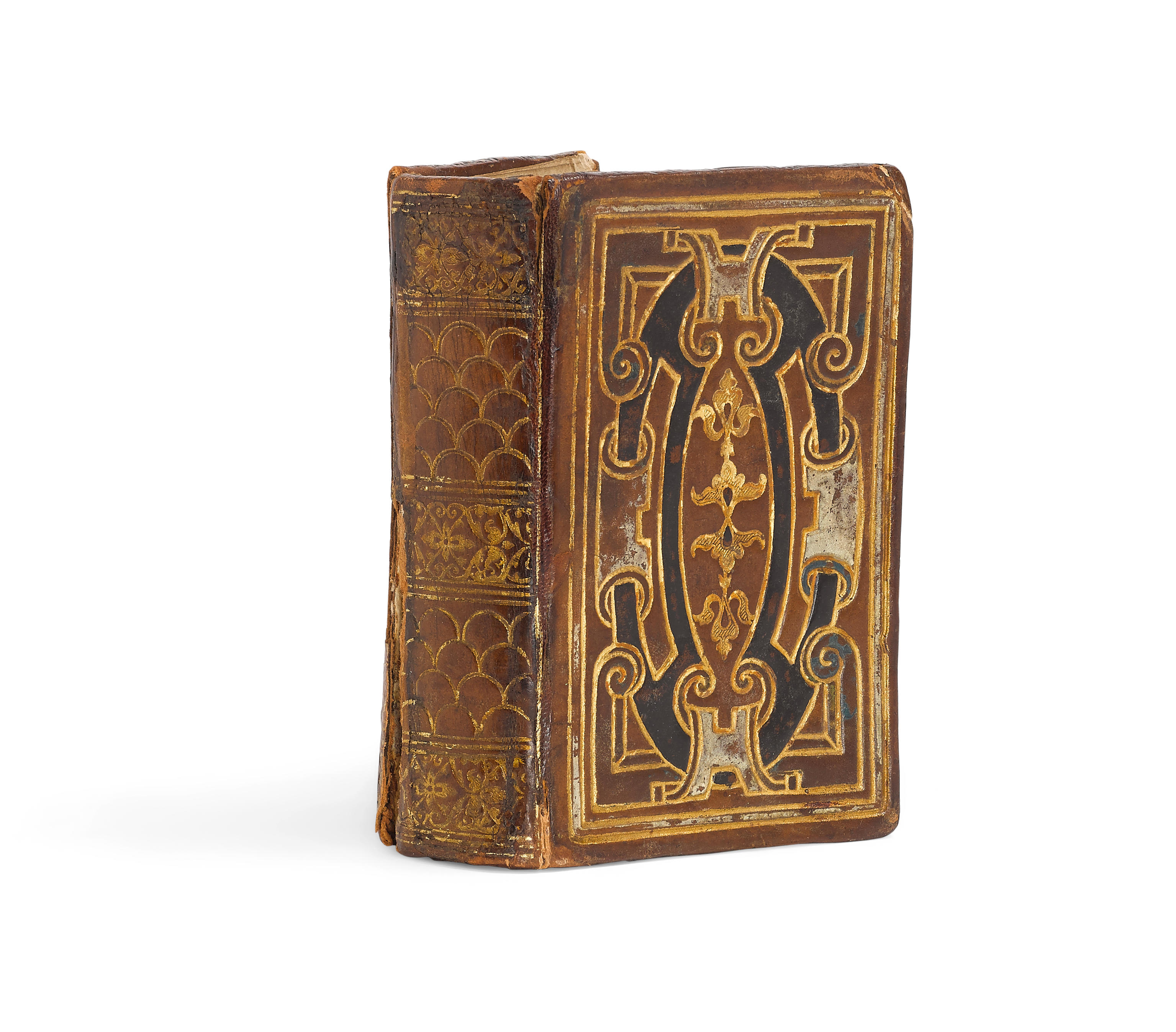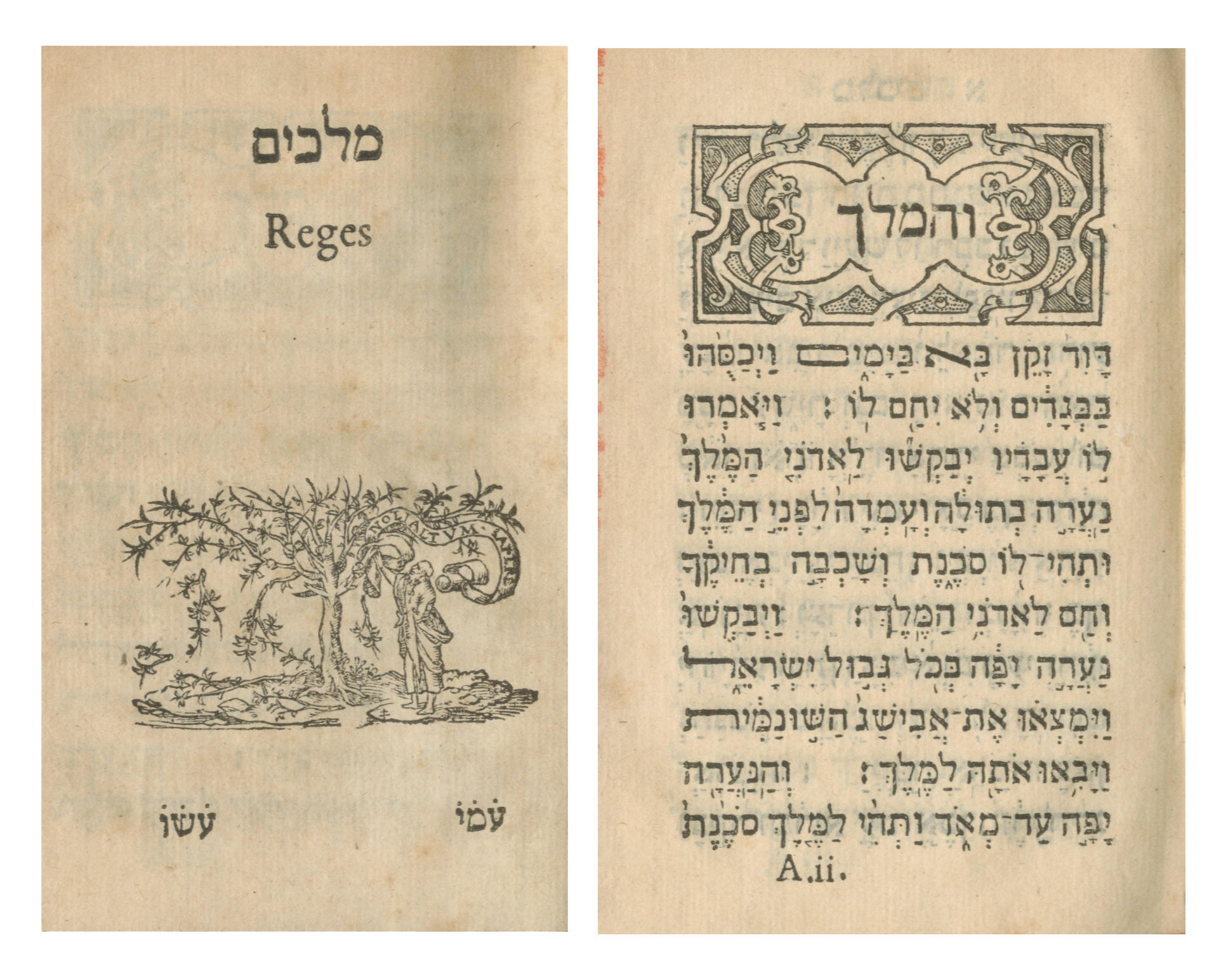BIBLE, Genesis , in Hebrew, manuscript on vellum [near East, 9th or 10th century] An exceptional survival from the Cairo Genizah: a fragment from one of the earliest Hebrew biblical codices of the 9th or 10th century, from the famed collection of David Solomon Sassoon. 1 leaf, 270 x 300mm, part of three columns of 17 lines, blind-ruled, written in black ink in a large fine Eastern Hebrew square script, not vocalised (stained, creased and warped). Burgundy folder. Provenance : (1) From the Cairo Genizah, one of the most significant sources for any fragment of early Hebrew manuscript. Described in a letter to the Times in 1897 by the scholar Solomon Schechter as 'a battlefield of books, [in which] [...] the literary production of many centuries had their share in the battle, and their "disjecta membra" are now strewn over its area', the Genizah was a sacred storehouse located in the Ben Ezra Synagogue in Fustat, containing some 300,000 manuscript fragments that outlined a 1,000-year continuum of Jewish Middle-Eastern and North African history. Renovations to the building in 1891 released a number of leaves onto the antiquities market, whereupon the linguist Archibald Sayce attempted, in 1892, to acquire the entire collection for the Bodleian for the asking price of '£50 and 5 bakshish' (usually translated as 'tip'). Negotiations remained fruitless, and he left Cairo blaming the inebriation of the officials for his failure. In 1896, the Scottish twin sisters Agnes S. Lewis and Margaret D. Gibson returned from Egypt with fragments from the Genizah they considered to be of interest, and showed them to Schechter, 'their irrepressibly curious rabbinical friend' at Cambridge. Schechter departed for Egypt and obtained the remaining 193,000 fragments for Cambridge University (now the Taylor-Schechter Cairo Genizah Collection, the world's largest and most important single collection of medieval Jewish manuscripts). (2) David Solomon Sassoon (1880-1942), acquired by him in December 1922 together with 8 other Biblical texts from the Genizah; his sale at Sotheby’s, Seventy-Six Hebrew and Samaritan Manuscripts from the library of the late David Solomon Sassoon , London 21st June 1994, lot 1, part (1). (3) Schøyen Collection, MS 1858/1. Text : The leaf contains Genesis 4:13-23. It is comparable in date to the surviving parts of the Aleppo Codex (Jerusalem, Shrine of the Book); the Damascus Pentateuch (Jerusalem, Hebrew University); the St Petersberg Codex (National Library of Russia, MS.B19a) and British Library, Or.4445. These are the earliest witnesses to the format of the text as selected by Aaron Ben-Asher (d. c.960) in Tiberias, modern Palestine. Bibliography : D.S. Sassoon, Ohel David, Descriptive Catalogue of the Hebrew and Samaritan Manuscripts in the Sassoon Library , 1932, I, pp. 27 – 28.
BIBLE, Genesis , in Hebrew, manuscript on vellum [near East, 9th or 10th century] An exceptional survival from the Cairo Genizah: a fragment from one of the earliest Hebrew biblical codices of the 9th or 10th century, from the famed collection of David Solomon Sassoon. 1 leaf, 270 x 300mm, part of three columns of 17 lines, blind-ruled, written in black ink in a large fine Eastern Hebrew square script, not vocalised (stained, creased and warped). Burgundy folder. Provenance : (1) From the Cairo Genizah, one of the most significant sources for any fragment of early Hebrew manuscript. Described in a letter to the Times in 1897 by the scholar Solomon Schechter as 'a battlefield of books, [in which] [...] the literary production of many centuries had their share in the battle, and their "disjecta membra" are now strewn over its area', the Genizah was a sacred storehouse located in the Ben Ezra Synagogue in Fustat, containing some 300,000 manuscript fragments that outlined a 1,000-year continuum of Jewish Middle-Eastern and North African history. Renovations to the building in 1891 released a number of leaves onto the antiquities market, whereupon the linguist Archibald Sayce attempted, in 1892, to acquire the entire collection for the Bodleian for the asking price of '£50 and 5 bakshish' (usually translated as 'tip'). Negotiations remained fruitless, and he left Cairo blaming the inebriation of the officials for his failure. In 1896, the Scottish twin sisters Agnes S. Lewis and Margaret D. Gibson returned from Egypt with fragments from the Genizah they considered to be of interest, and showed them to Schechter, 'their irrepressibly curious rabbinical friend' at Cambridge. Schechter departed for Egypt and obtained the remaining 193,000 fragments for Cambridge University (now the Taylor-Schechter Cairo Genizah Collection, the world's largest and most important single collection of medieval Jewish manuscripts). (2) David Solomon Sassoon (1880-1942), acquired by him in December 1922 together with 8 other Biblical texts from the Genizah; his sale at Sotheby’s, Seventy-Six Hebrew and Samaritan Manuscripts from the library of the late David Solomon Sassoon , London 21st June 1994, lot 1, part (1). (3) Schøyen Collection, MS 1858/1. Text : The leaf contains Genesis 4:13-23. It is comparable in date to the surviving parts of the Aleppo Codex (Jerusalem, Shrine of the Book); the Damascus Pentateuch (Jerusalem, Hebrew University); the St Petersberg Codex (National Library of Russia, MS.B19a) and British Library, Or.4445. These are the earliest witnesses to the format of the text as selected by Aaron Ben-Asher (d. c.960) in Tiberias, modern Palestine. Bibliography : D.S. Sassoon, Ohel David, Descriptive Catalogue of the Hebrew and Samaritan Manuscripts in the Sassoon Library , 1932, I, pp. 27 – 28.

.jpg)










.jpg)

Testen Sie LotSearch und seine Premium-Features 7 Tage - ohne Kosten!
Lassen Sie sich automatisch über neue Objekte in kommenden Auktionen benachrichtigen.
Suchauftrag anlegen